Unforeseeable consequences of tobacco abuse
Mr. Man (50 years old), living in the Southwest region, smoked about two packs of cigarettes a day for many years. About a month ago, a persistent ulcer appeared on the ring finger of his right hand, accompanied by a constant pain in the tip of his finger, causing him to lose sleep.
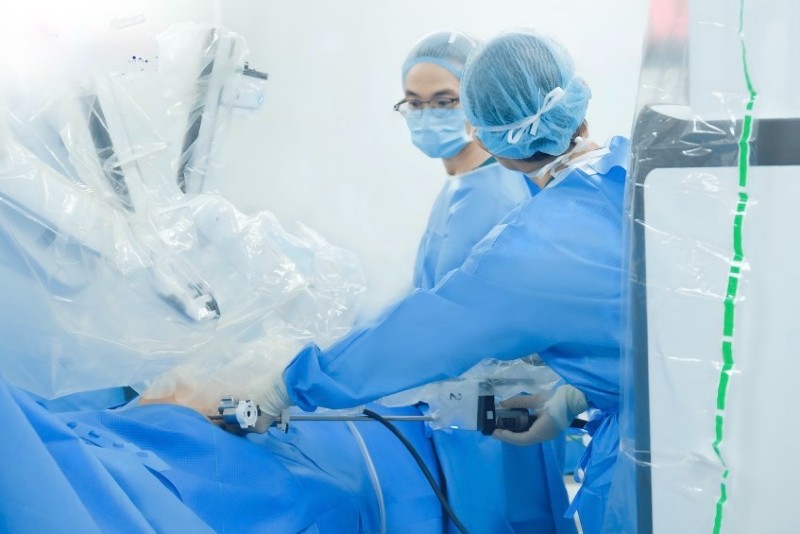 |
| Illustration photo. |
Initially, he went to the provincial hospital and was diagnosed with nail disease. After many times of skin excision, medication and dressing changes but no improvement, the doctor suspected that he had ischemia, a sign of peripheral vascular disease.
Ultrasound and CT scan results showed that the large blood vessels were still circulating normally, but the small blood vessels in the right arm were severely inflamed and blocked. Mr. Man was then transferred to Tam Anh General Hospital in Ho Chi Minh City for intensive treatment.
According to Dr. Nguyen Anh Dung, Head of the Department of Thoracic and Vascular Surgery, Mr. Man was confirmed to have Buerger's disease (thromboangiitis obliterans), a rare disease caused by non-atherosclerotic inflammation, often affecting small and medium-sized blood vessels in the arms and legs.
Dr. Dung explained that Buerger’s disease is a combination of inflammation and blood clot formation in the blood vessels, reducing blood flow to the limbs. If not treated promptly, the fingers or toes can turn purple-black, ulcerate, become infected, and even die, requiring amputation. Severe cases can lead to life-threatening complications such as sepsis.
The primary cause of Buerger’s disease is cigarette smoking. Chemicals in cigarette smoke stimulate the immune system to attack blood vessel walls, causing inflammation and damage. Both active smoking, e-cigarette use, and passive smoking can increase the risk of developing the disease.
Because the blocked blood vessels were located in very small and deep locations, doctors could not perform interventional methods such as angioplasty or stent placement. Instead, the team decided to perform thoracic sympathectomy, an indirect method to dilate the vessels and improve blood circulation.
The surgery takes about 15 minutes. The surgeon makes two small 5mm incisions in the armpit, inserts the device into the chest and removes the sympathetic ganglion. Removing the ganglion helps dilate the peripheral blood vessels, increasing blood flow to the limb, reducing pain due to tissue ischemia and promoting healing.
After the surgery, Mr. Man's hand felt warm again and the pain quickly subsided. He was discharged from the hospital after two days and was advised by the doctor to quit smoking to prevent a relapse.
According to Dr. Dung, Buerger’s disease often develops silently. The early stages may only be a burning sensation, numbness, or tingling in the hands and feet. Later, small ulcers appear on the fingers and toes, and skin discoloration. In the later stages, the patient may experience cramps, blood clots, red, blue, purple, cold, and numb fingers – clear signs of gangrene.
Without timely intervention, the patient is at risk of having to amputate a finger or limb, especially when the infection spreads and causes severe necrosis.
To prevent Buerger’s disease, doctors recommend absolutely avoiding smoking – including regular cigarettes, e-cigarettes and avoiding passive smoking. In addition, keep your hands and feet warm, especially in cold weather; exercise regularly to improve blood circulation; avoid sitting or standing in one position for too long; and do not wear clothes that are too tight, causing blood circulation problems.
In addition, it is necessary to control chronic diseases such as diabetes, high blood pressure and have regular health check-ups to detect early signs of abnormal blood vessels and prevent dangerous complications.
Overweight and obesity linked to dementia
Overweight and obesity are not only the cause of metabolic diseases such as diabetes, high blood pressure, cardiovascular disease... but also closely related to neurocognitive disorders, especially dementia. Good weight control is considered one of the effective measures to reduce the risk of brain dysfunction.
The above information was shared by medical experts at the scientific conference "Multimodal treatment of obesity" recently organized by the TAMRI Institute.
Speaking at the conference, Dr. Le Van Tuan, a neurologist, said that dementia is a common neurological disorder that can occur at different levels, affecting memory, language and mobility. Obesity is one of the increasingly recognized risk factors.
Obese people are at high risk of vascular diseases such as high blood pressure, stroke, diabetes. These are factors that directly affect the nervous system and cognitive function. In particular, insulin resistance in the brain, likened to “type 3 diabetes”, is one of the mechanisms causing metabolic disorders and brain inflammation, which may be related to Alzheimer's disease.
“Obese people often have accumulated fat tissue, especially in the abdominal area. When it exceeds the necessary threshold, this fat tissue not only stores energy but also secretes substances that disrupt the endocrine and nervous system. This increases the risk of leptin resistance, the hormone that controls satiety, leading to obesity and negatively affecting higher nervous system functions,” Dr. Tuan explained.
In addition, overweight people are also susceptible to intestinal microflora disorders, which directly affect the gut-brain axis, contributing to neurodegeneration. Many studies show that the higher the BMI, the more the gray matter volume and cerebral cortex thickness decrease, significantly affecting cognitive ability.
MSc. Dr. Hoang Thi Hong Linh, Tam Anh Weight Loss Center, said that obesity is related to more than 200 different types of complications, including disorders of the central nervous system.
According to Dr. Linh, GLP-1 receptor agonists (GLP-1 RA), a group of modern weight loss drugs, not only help control weight but also have anti-inflammatory and anti-oxidant effects in the brain. In particular, GLP-1 RA has the ability to cross the blood-brain barrier, support insulin signaling in the brain and protect nerve cells from chronic inflammation, one of the main causes of Alzheimer's.
“GLP-1 RA not only effectively supports weight loss, but also helps maintain energy metabolism and improve cognitive function, especially in the early stages of Alzheimer's disease. In people with type 2 diabetes or obesity, GLP-1 RA significantly reduces the risk of dementia,” said Dr. Linh.
According to experts, obesity not only affects the elderly but is also increasingly affecting young people. Many studies show that young people with obesity tend to have reduced concentration, slow reading comprehension, and early signs of mild dementia.
“Research that combines obesity, GLP-1 and cognitive dysfunction may open up a way to detect dementia early in overweight people. Effective and proactive treatment of obesity will help prevent the risk of neurological damage from an early stage,” Dr. Hoang emphasized.
Experts emphasize that weight loss is not only to improve body shape but also a strategy to prevent and treat many dangerous diseases, including dementia. Controlled weight loss, especially by scientifically proven methods such as using GLP-1 RA drugs, will help improve both metabolism and brain function without causing harm, especially for the elderly.
Obesity is a “foundational disease” of modern times, with silent but profound effects. Therefore, screening, treatment and weight control are not only aesthetic issues but also urgent needs to protect intelligence and long-term quality of life.
Robot-assisted surgery for paracardiac thymoma
A 61-year-old man has just had surgery to remove a large thymus tumor, located close to the heart and major blood vessels. The surgery was performed using a modern robotic system to minimize the risk of complications and help the patient recover quickly.
Two years ago, Mr. Vien (61 years old) had symptoms of cough, fever and chest pain. At the hospital, a chest CT scan showed that he had lung damage and a 6 cm mediastinal tumor, along with a 1 cm nodule in the upper lobe of his right lung.
Dr. Le Thi Ngoc Hang (Thoracic and Vascular Surgery Department) performed endoscopic biopsies on both sites. The results showed that the lung nodule was caused by a fungal infection, while the mediastinal tumor was a benign thymoma. Because the tumor did not compress the surrounding organs, the doctor decided not to perform surgery and only treated the lung fungus for 3 months. Mr. Vien gradually recovered, his fever and cough disappeared.
A month ago, Mr. Vien returned for a check-up due to recurring chest pain. A new CT scan showed that the tumor had grown to 10 x 8 x 5 cm in size, located right next to the heart, close to the aorta and vena cava. Although the tumor had not yet attached to the blood vessels, due to its large size, it caused compression and posed a potential risk of complications if not intervened promptly.
Dr. Nguyen Anh Dung, Head of the Department of Thoracic and Vascular Surgery, assessed that the tumor was too large to be operated on endoscopically. If the chest were opened, the risk of damage to the heart and blood vessels would be high due to the very narrow surgical space. Furthermore, cutting the sternum would increase the risk of infection, blood loss and prolong recovery time.
To minimize risks, the surgical team used the Da Vinci Xi surgical robot system. The robot has four flexible arms that are inserted into the chest through small incisions of only 8 mm. The robotic arms can rotate 540 degrees, simulating human wrists, helping the surgeon operate precisely in deep and narrow surgical areas.
“The Da Vinci Xi is the first robot with an integrated welding and hemostasis handle, allowing immediate cutting and treatment of bleeding without changing instruments. This helps to minimize blood loss, which is especially important for elderly patients or patients with underlying diseases,” said Dr. Dung.
After more than an hour, the surgery was successful. The patient only had a small incision, almost no pain, could walk lightly after a day and was discharged two days later.
Pathology results showed that Mr. Vien had early stage, non-invasive thymic carcinoma. The patient was given a chemotherapy and radiotherapy regimen to prevent recurrence.
According to Dr. Le Thi Ngoc Hang, the thymus gland is located behind the sternum and plays an important role in the production of T cells, an essential component of the immune system. The thymus gland can develop benign tumors or thymic carcinoma (TET).
Benign thymomas are usually slow growing and rarely spread. Meanwhile, malignant thymic carcinomas progress rapidly, with the risk of invasion and metastasis.
In the early stages, the disease often has no obvious symptoms. Many patients are only discovered when the tumor has grown large and is compressing surrounding organs such as the heart, lungs or blood vessels. Some symptoms to be aware of include: chest pain, hoarseness, difficulty breathing, coughing up blood...
“Regular health check-ups and chest imaging are effective ways to detect mediastinal tumors early, thereby increasing the chance of successful treatment,” Dr. Hang recommended.
Source: https://baodautu.vn/tin-moi-y-te-ngay-57-he-luy-khon-luong-khi-lam-dung-thuoc-la-d322270.html




![[Photo] General Secretary To Lam attends the 95th Anniversary of the Party Central Office's Traditional Day](https://vphoto.vietnam.vn/thumb/1200x675/vietnam/resource/IMAGE/2025/10/18/1760784671836_a1-bnd-4476-1940-jpg.webp)


![[Photo] Collecting waste, sowing green seeds](https://vphoto.vietnam.vn/thumb/1200x675/vietnam/resource/IMAGE/2025/10/18/1760786475497_ndo_br_1-jpg.webp)































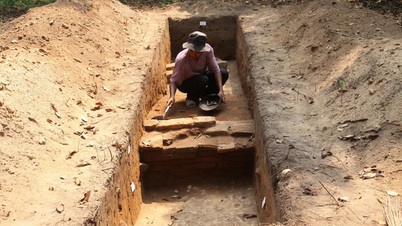





































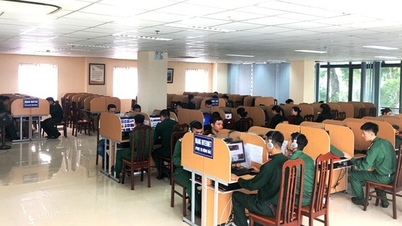


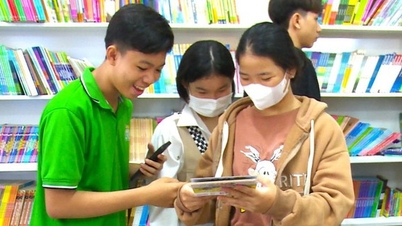



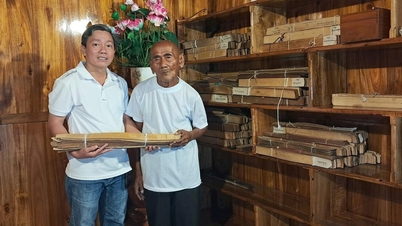






















Comment (0)